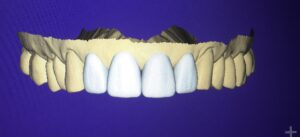CEREC® Single-Visit Crown Benefits
June 24th, 2020

Have you ever had a sinking feeling when you bite into something and hear an unsettling crunch? You know you’ve broken a tooth, and worry about just how long it will take to get it fixed. You’ve heard that it can take two dental appointments and several weeks to get a crown, while the dentist waits for a dental lab to make your new tooth. But who wants to wait that long?
That’s why our Chicago office invested time and money into the equipment and training necessary to offer CEREC single-visit crowns to our patients. CEramic REConstruction means that our dental practice can produce metal-free dental restorations to match your smile in just one visit.
CEREC uses CAD/CAM technology, an advanced computer program that acts as a dental restoration tool, so you don’t have to worry about dealing with the mess and discomfort of traditional crown placement. No more choking on dental trays while we make an impression of your teeth. When you come to us with a broken or damaged tooth, we perform a thorough examination and then create a 3D optical impression of your mouth. After that, we use CEREC technology to design and mill a precision ceramic restoration right in our office.
Feel Better Faster With CEREC Restorations
As a patient, you experience many benefits from this one-visit approach to dental restorations. CEREC allows Drs. Daniel Aneszko and Rana Stino to preserve more of your original tooth structure, which means less drilling for you. No temporary crowns are required, because we can take you from diagnosis to restoration in one office visit.
Patients say they love the results, too. Natural tooth-colored porcelain materials are used to create your restoration so it matches your natural coloring as closely as possible.
There is no mess, less discomfort, and no long wait with CEREC, and you get great results, too. Technology is changing the way we provide dental services. If you experience a broken tooth, or are thinking of replacing a cracked or damaged tooth, contact our Chicago office today and ask whether a CEREC single-crown visit is right for you.






















































 Website Powered by Sesame 24-7™
Website Powered by Sesame 24-7™